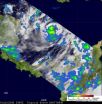Moving closer to outdoor recreation not a recipe for being more physically active
Study shows BMIs increased in those who chose to move to be closer to outdoor recreation
2010-09-25
(Press-News.org) You'd think that people choosing to live near to outdoor recreation amenities would have a lower body mass index or BMI thanks to an increase in all that healthy outdoor activity right on one's doorstep. Yet a new University of Alberta study looking at the relationship between reasons for choosing a neighbourhood to live in, physical activity and BMI, shows that's simply not the case.
In fact researchers found that those who said they'd moved to be closer to outdoor recreation opportunities actually showed a marked increase in BMI over the six years of a longitudinal study conducted from 2002 to 2008, and led by Tanya Berry of the Faculty of Physical Education and Recreation.
"(One of the things we analysed) in this paper was the movers and non-movers," says Berry. "Those who had moved over the six years of the study and had indicated that choosing a neighbourhood for ease of walking was very important to them had a very stable BMI and didn't change much over the six years.
"But the results for the question related to choosing to live near outdoor recreation facilities were completely the opposite from what we would have thought. The more people said they chose their neighbourhood because of its access to outdoor recreation, the higher their BMI. We can speculate that maybe they're doing it for the kids; maybe they're driving to the outdoor places. And we don't know how they defined 'outdoor recreation.' It could be camping and lazing about or it could be cross-country skiing, but we found pretty big differences in their activity output."
Berry and her team conducted two studies, one longitudinal (from 2002 – 2008 with 822 participants) and one cross-sectional (2008 with 1505 participants), to look at the relationship between BMI and neighbourhood walkability, socio-economic status, reasons for choosing their neighbourhood, how physically active they were, fruit and vegetable intake, and demographic variables, such as age, gender, job status and education, which were gleaned from census data.
Berry says the relationship between those who chose to move to a walkable neighbourhood and BMI was clear. "For those people who had moved for ease of walking and thought it was important, their BMIs didn't change and they were able to maintain their weight. But for those for whom it was not important at all, they showed an increase in BMI and that was matched with the cross-sectional data."
Berry says that, as expected, those in lower socio-economic status (SES) neighbourhoods had higher BMIs. "That's completely consistent with the literature. There is so much more access to fast food restaurants; there are fewer grocery stores; it may not very pleasant to be active in your neighbourhood. So there's a whole host of issues (that need to be addressed.)
Socio-economic status is an important factor and we really should be paying more attention to how to help people in lower SES neighbourhoods overcome the barriers they face to health," Berry says.
She concludes, "Those who are choosing neighbourhoods because they can walk are, at least in terms of BMI, the healthiest of all. So this is a very important factor in the built environment/BMI relationship and needs further study."
The study, "A longitudinal and cross-sectional examination of the relationship between reasons for choosing a neighbourhood, physical activity and body mass index" was published in the International Journal of Behavioral Nutrition and Physical Activity.
###
Contact:
Tanya Berry, PhD
Faculty of Physical Education and Recreation
University of Alberta, Edmonton, Alberta, Canada
780-492-3280; tanya.berry@ualberta.ca
END
ELSE PRESS RELEASES FROM THIS DATE:
2010-09-25
BOSTON—In the quest to arrest the growth and spread of tumors, there have been many attempts to get cancer genes to ignore their internal instruction manual. In a new study, a team led by Dana-Farber Cancer Institute scientists has created the first molecule able to prevent cancer genes from "hearing" those instructions, stifling the cancer process at its root.
The study, published online by the journal Nature, demonstrates that proteins issuing stop and start commands to a cancer gene – known as epigenetic "reader" proteins – can be targeted for future cancer therapies. ...
2010-09-25
With several advanced warfare vehicles and a lineup of exciting technologies, the Office of Naval Research (ONR) will showcase its latest expeditionary equipment at the 2010 Modern Day Marine Exposition scheduled Sept. 28-30 at Quantico Marine Corps Base, Quantico, Va.
Modern Day Marine is one of the world's largest trade shows featuring expeditionary warfare equipment. More than 400 exhibitors and 8,000 attendees are expected to attend the event—now in its 30th year—for an up-close look at equipment and systems that support the U.S. Marine Corps and other allied forces' ...
2010-09-25
An instrument on NASA's Aqua satellite noticed increasing colder cloud top temperatures of tropical depression 15 in the south-central Caribbean just before it strengthened into Tropical Storm Matthew late on Sept. 23. The TRMM satellite also spotted heavy rainfall within the system. Matthew is now headed to the western Caribbean and watches and warnings are in place as Matthew may continue to strengthen.
Cloud top temperatures indicate the strength of the storm to forecasters. The colder the cloud top temperatures, the stronger the convection and uplift. When cloud top ...
2010-09-25
Towering thunderstorms and heavy rainfall are two things that NASA's CloudSat satellite saw as it passed over Typhoon Malakas, and those two factors confirm a strong storm. NASA's CloudSat satellite's Cloud Profiling Radar can basically slice a tropical cyclone in half and take a look at its clouds and rainfall, and that's what it did when it passed over Typhoon Malakas on Sept. 23.
CloudSat flew over Typhoon Malakas during the daytime on Sept. 23. At that time, Malakas had a minimum central pressure of 965 millibars, maximum winds of around 115 mph (100 knots), and ...
2010-09-25
The GOES-13 satellite has been keeping an eye on Tropical Storm Lisa and watched her birth, graduation to depression then tropical storm and back to depression. Now, Lisa has grown back to tropical storm status, but it may be short-lived.
At 11 a.m. EDT on Friday, Sept. 24, Tropical Storm Lisa had maximum sustained winds near 50 mph and she may strengthen and weaken over the weekend, but by Sunday colder waters will zap her energy source and she is forecast to be a depression.
Meanwhile, on Sept. 24, she was still frolicking in the eastern Atlantic, about 320 miles ...
2010-09-24
How could the current financial crisis have happened? While fingers have been pointing to greedy banks, subprime-loan officers, and sloppy credit card practices, these are not the only contributors to the economic downturn. A new report in Psychological Science in the Public Interest, a journal of the Association for Psychological Science, examines the psychology of financial decision making, including the role of risk in making economic choices, how individuals behave in stock and credit markets, and how financial crises impact people's well-being.
Risk taking is a ...
2010-09-24
SAN ANTONIO, Texas, U.S.A. (Sept. 22, 2010) – Candida albicans, a fungus that kills more than 10,000 people with weakened immune systems each year, grows more dangerous as it forms and extends long strands of cells called hyphal filaments. In a paper published this month, UT Health Science Center San Antonio microbiologists describe a key factor involved in this damaging growth.
This finding may eventually lead to targets for antifungal strategies, the scientists said.
Patricia Carlisle, a Ph.D. student at the Health Science Center, and David Kadosh, Ph.D., assistant ...
2010-09-24
AURORA, Colo (Sept. 22, 2010) Antisocial boys who abuse drugs, break laws, and act recklessly are not just "bad" kids. Many of these boys may have malfunctioning brains, according to a new study by researchers at the University of Colorado School of Medicine.
"Brain responses to everyday rewards and punishments gradually guide most youngsters' decisions to conform with society's rules. However, when these seriously troubled kids experience rewards and punishments, and make decisions, their brains apparently malfunction," said Thomas Crowley, MD, a professor of Psychiatry ...
2010-09-24
WASHINGTON, DC (September 22, 2010) -- One-year data from the PARTNER clinical trial, published today in the New England Journal of Medicine, demonstrate that transcatheter aortic-valve implantation, compared with standard therapy, resulted in significantly lower rates of death among patients who cannot undergo surgery for aortic stenosis. The results will be presented tomorrow as a Late Breaking Trial at the 22nd annual Transcatheter Cardiovascular Therapeutics (TCT) scientific symposium.
Transcatheter aortic-valve implantation (TAVI) is a new procedure in which a bioprosthetic ...
2010-09-24
According to the NOAA Coral Reef Watch monitoring system, coral bleaching is likely in the Caribbean in 2010. With temperatures above-average all year, NOAA's models show a strong potential for bleaching in the southern and southeastern Caribbean through October that could be as severe as in 2005 when over 80 percent of corals bleached and over 40 percent died at many sites across the Caribbean. Scientists are already reporting coral bleaching at several Caribbean sites and severe bleaching has been reported from other parts of the world.
The NOAA Coral Reef Watch (CRW) ...
LAST 30 PRESS RELEASES:
[Press-News.org] Moving closer to outdoor recreation not a recipe for being more physically active
Study shows BMIs increased in those who chose to move to be closer to outdoor recreation



